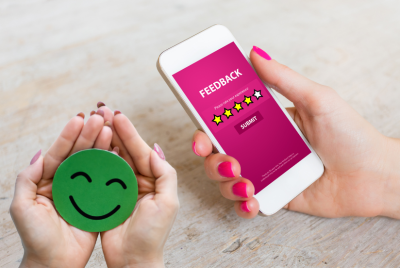Mastering Personalized Communication: Automated messaging strategies
Introduction
Hey there! Have you ever received an email or a notification that made you feel like it was specifically crafted for you? That’s the power of personalized communication. In today’s digital age, businesses strive to create meaningful connections with their audience, and one way to achieve this is through tailored automated communication. In this article, I’ll be sharing valuable insights and strategies on how to effectively personalize your automated communication at scale. Whether you’re a marketer, entrepreneur, or business owner, these suggestions will help you engage your audience, build lasting relationships, and drive business growth. So, let’s dive in!
1. Understanding the Importance of Personalized Communication
Before we dive into the strategies, it’s crucial to understand why personalized communication matters. In a sea of generic messages, personalized content stands out, capturing attention and creating a sense of relevance. By tailoring your automated communication, you show your audience that you understand their needs, preferences, and pain points. This fosters trust, boosts engagement, and increases the likelihood of conversions.
2. Segmenting Your Audience for Effective Personalization
Segmentation is the foundation of successful personalization at scale. By dividing your audience into smaller, distinct groups based on demographics, behavior, or preferences, you can create more targeted and relevant communication. Leverage data analytics, customer surveys, and past interactions to identify key segments and develop personalized messaging for each group.
3. Crafting Compelling Personalized Messages
Once you have your audience segments defined, it’s time to create compelling personalized messages. Remember to use language that resonates with each segment, addressing their specific pain points and aspirations. Incorporate the recipient’s name, reference past interactions, and highlight relevant products or services. By doing so, you’ll make your audience feel seen, valued, and more likely to take action.
4. Leveraging Automation Tools and Platforms
To personalize at scale, it’s essential to leverage automation tools and platforms. These technologies streamline the process, allowing you to send personalized messages efficiently and effectively. Choose a reliable automation platform that offers features like dynamic content, triggered emails, and behavior-based messaging. With the right tools in place, you can automate personalized communication while maintaining authenticity.
5. Dynamic Content: The Power of Real-Time Personalization
Dynamic content takes personalization to the next level by providing real-time tailored messaging. Utilize dynamic content blocks that adapt based on recipient behavior or preferences. For example, an e-commerce platform can showcase product recommendations based on browsing history. By serving relevant content in the moment, you enhance engagement and increase the likelihood of conversions.
6. A/B Testing and Optimization for Continuous Improvement
To ensure the effectiveness of your personalized communication, embrace A/B testing and optimization. Experiment with different subject lines, content variations, and calls-to-action to identify what resonates best with each audience segment. Continuously analyze and optimize your automated communication to enhance engagement, conversions, and overall performance.
7. Building Trust and Rapport Through Personalization
Personalization is not just about addressing individuals by name; it’s about building trust and rapport. Show your audience that you genuinely care by providing valuable content, solving their problems, and delivering exceptional customer experiences. Tailored communication helps you establish a genuine connection, fostering long-term relationships that translate into brand loyalty and advocacy.
8. Ensuring Privacy and Data Protection
As you collect and utilize customer data for personalization, it’s crucial to prioritize privacy and data protection. Ensure compliance with data regulations, clearly communicate your privacy policy, and obtain proper consent from your audience. By demonstrating your commitment to data security, you build trust and reassure customers that their information is safe in your hands.
Conclusion
Personalization at scale is no longer a luxury but a necessity in today’s competitive business landscape. By implementing the strategies discussed in this article, you can engage your audience on a deeper level, build lasting relationships, and drive business growth. Remember, personalized communication is a powerful tool that humanizes your brand and establishes meaningful connections. Embrace the possibilities, experiment, and continuously refine your automated communication to deliver exceptional experiences.
FAQs
Q: Can personalization at scale be applied to various industries?
A: Absolutely! Personalization can be implemented across industries, from e-commerce and SaaS to healthcare and hospitality. Tailoring your automated communication is beneficial regardless of your business’s niche.
Q: Is it time-consuming to implement personalization at scale?
A: Initially, setting up personalized automation may require some time and effort. However, once you have the right tools and processes in place, it becomes a streamlined and efficient way to engage your audience.
Q: How do I measure the effectiveness of my personalized communication?
A:Use key metrics like open rates, click-through rates, conversion rates, and customer feedback to measure the effectiveness of your personalized communication. Continuously monitor and analyze these metrics to optimize your strategies.
Q: Are there any risks associated with personalization?
A: While personalization offers great benefits, there are risks, particularly in data privacy and security. Ensure you follow best practices, comply with regulations, and prioritize data protection to mitigate these risks.
Q: Can personalization be applied beyond automated communication?
A: Absolutely! Personalization can extend to various touchpoints, including websites, mobile apps, customer support, and even physical products. Explore opportunities to tailor experiences throughout the customer journey.
In conclusion, personalization at scale is a game-changer for businesses aiming to forge meaningful connections with their audience. By leveraging segmentation, crafting compelling messages, and utilizing automation tools, you can deliver tailored communication that engages, converts, and builds lasting relationships. Embrace the power of personalization, and watch your business thrive!




